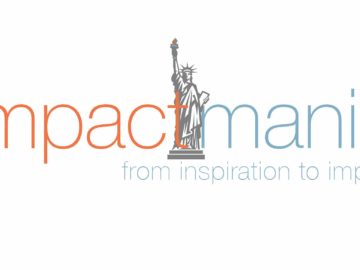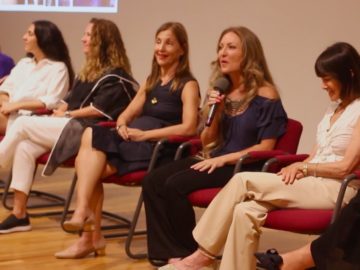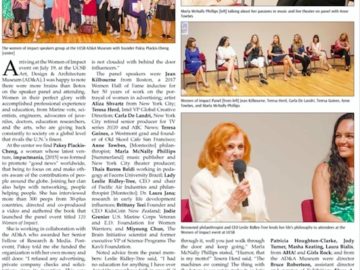Thomas Kenny, Board U.S. Olympics Paralympic, on Giving
BY PAKSY PLACKIS-CHENG
In celebration of the Paralympics 2016, here is a glimpse of one of its former board members of the U.S. Paralympics.
Thomas Kenny, former executive at Goldman Sachs, and his wife Susan McMillan moved across the country into a new home. While many would need time to settle into their new environment, the couple instantly became active in the community. They both serve on many different organizations, are actively involved in the national sport and recreation arena, and have interests that range from supporting the arts, to education, and to health care.
One of the national boards Thomas Kenny served on: U.S. Paralympics.
Tell me about your involvement with U.S. Paralympics.
Although the Paralympics games began in the late 1940s, they only formally took off with the 1988 games. The United States Olympic Committee (USOC) oversees both the Olympic and Paralympics teams and activities. After a period of internal discussion, USOC decided to form a new Paralympics Advisory Committee, which acts like a mini-board for the Paralympics and reports directly to the USOC. Once I heard the story and met a few of the leadership members that were involved, I said, “This is something that I really want to support.” I have always been interested in how we can better integrate disabled athletes with able-bodied athletes in sport and society. It has been over two years since the Paralympics Advisory Committee was formed. Ironically, we held our first meeting on the day of the Boston Marathon at the hotel across the street from the tragedy we witnessed yesterday [Boston Marathon Bombing, April 15, 2013].
How has the newly formed Advisory Committee impacted the Paralympics?
The first thing we looked at was governance, including how we could get the USOC to even more fully recognize the growing Paralympics movement. This included reporting structure, budget planning, and resource allocation. We have spent a lot of time trying to find new, sustainable revenue streams to support the Paralympics. This included the first-ever series of Paralympics-related television commercials leading up and through the 2012 London Olympic Games. The commercials were a tremendous success, not only for the Paralympics, but also for the sponsors.
Since then, we’ve done three things that have been impactful: One, we went out and began fundraising from individual donors. Unlike many other large countries, the U.S. government provides little direct support so we rely on television rights for the Olympic Games as well as business and individual sponsorships. We’ve gone from having no pure individual philanthropic support for Paralympics athletes in 2011 to reaching a goal of $10 million in multi-year gifts in 2013.
The second thing we did is strengthen governance and overall connectivity between the Olympics and Paralympics leadership. This includes multi-year budget planning, multi-year operation plans with specific metrics for the Paralympics teams, and much more focus and review at the USOC Board level.
Lastly, in a short period of time, the overall resources allocated to the Paralympics have increased two-fold, maybe even higher. The Paralympics Advisory Committee has increased awareness, improved governance, and certainly increased the resources going to the Paralympics, so I think it has been pretty successful so far.
Why do you give?
Since my wife and I were married, we’ve tried to give back. Whether it was with our time or money or both. It’s been a really important part of our lives together. I would say that over the last six or seven years, our giving focus has increased dramatically. I think it is due, in part, to my experience at Goldman Sachs. In 2006, Goldman created the GS Gives Program. They would set aside a pool of money each year at the corporate level and require partners to contribute a certain amount of their compensation to a foundation. You would then allocate your contribution to any number of nonprofits at your discretion. It really instilled a culture of giving. I truly value this today. GS Gives became a really important part of the annual compensation process. It encourages employees to get involved, both in allocating funds to nonprofits but also volunteering their time. It was incredible to see how people responded, especially those that might not have been involved in philanthropy earlier in their careers.
How does Goldman Sachs encourage volunteer work?
Goldman Sachs’ monetary support primarily came from GS Gives program while the volunteering came through a company-wide program called Community Team Works. In this program, most of the 30,000-plus global employees sign up to volunteer at local nonprofits. Many times, this leads to more substantial giving of time through board work, etc. The firm also sponsors training for those that want to be on nonprofit boards. There is a sabbatical opportunity where you can leave for a year and take on a leadership role at a nonprofit. While on sabbatical, Goldman Sachs would support you and guarantee you a job coming back. This type of giving was embedded in the company’s culture and it helped me grow. I was probably 40 years old when this happened and it changed my view on giving forever. Today, Susan and I feel so fortunate to be able to give to so many organizations. Both in terms of financial resources, but, even more importantly, now that we have time, we can both give our time as well.
How can people get involved in giving back?
The best way to get involved is to start early: commit an hour or two per month to volunteering or sitting on an ad hoc committee with a special project in an organization that you are passionate about. For those who might not have time but have financial resources, I would encourage anyone to find an organization you connect with and start giving financially. If you have time, give time. Time is as important as financial resources. There are two things to think about: First, which organization? That’s really a personal decision that everyone has to evaluate. They should think about what the most important way to give back to their community might be. Then, how much time can I commit? I think everyone can commit some time, whether it’s an hour a month or 10 hours a month, on the board or on a committee. There’s lots of different ways to give back. Think of the role model you become for your kids; the more you give, the more you are going to get back.
Thomas Kenny, Former Partner and Advisory Director of Goldman Sachs Asset Management, served as Co-Head of the Global Cash and Fixed Income portfolio management business.
The interview is part of the book Impact X (2015).





